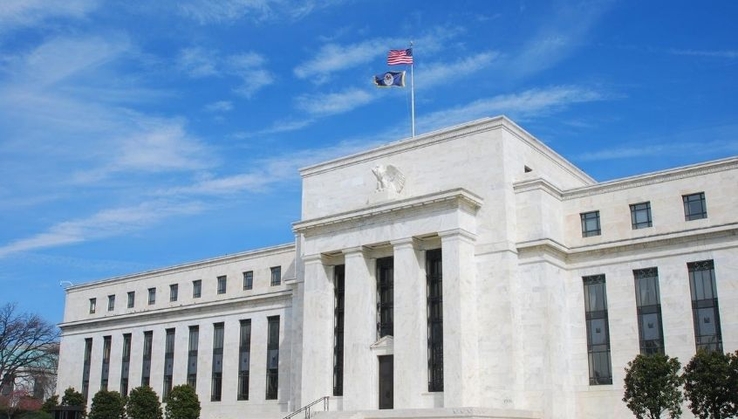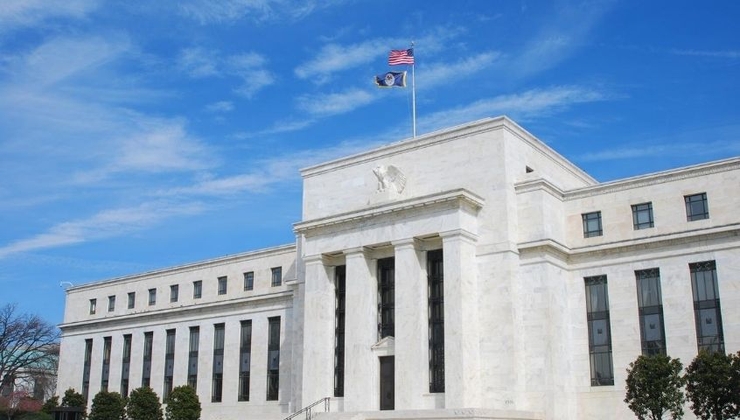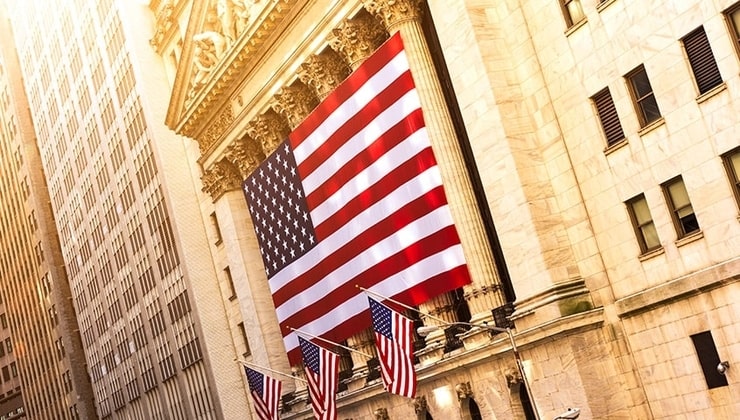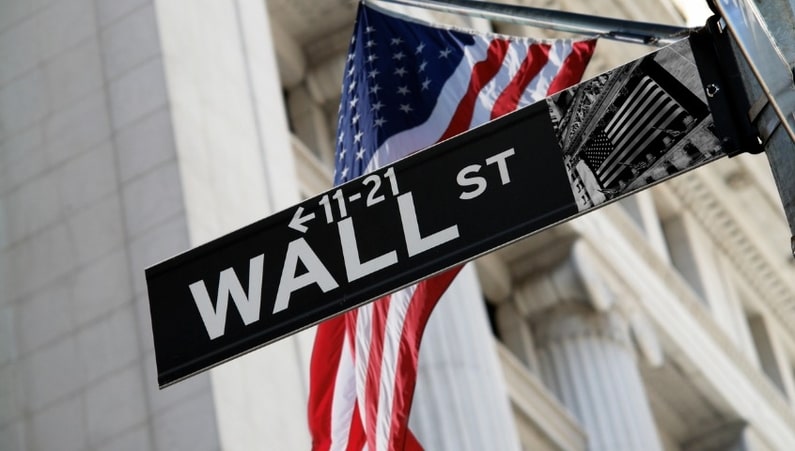Near zero rates for years to come.
Margin trading products are complex instruments and come with a high risk of losing money rapidly due to leverage. 88% of retail investor accounts lose money when trading on margin with this provider. You should consider whether you understand how margin trading works and whether you can afford to take the high risk of losing your money.
- English
Federal Open Market Committee (FOMC) Meeting
Everything you need to know about the FOMC meeting, policy decisions, and why it matters to traders.
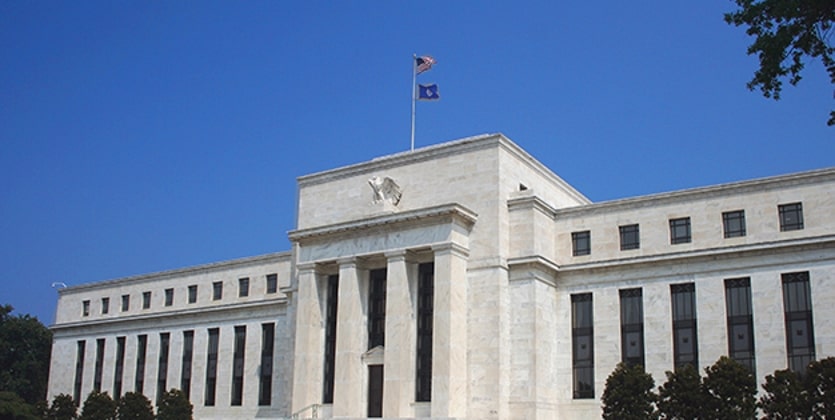
What is the FOMC?
The Federal Open Market Committee (FOMC) is a branch of the US Federal Reserve. The committee meets eight times a year, approximately every six weeks, to make decisions on monetary policy in the USA. Monetary policy influences the supply and cost of the US dollar, with decisions guided by a dual mandate to price stability and full employment.
You’ll often hear FOMC members referred to as hawks or doves. A hawk refers to someone who thinks monetary conditions should be tightened and interest rates higher. A dove favours easing monetary conditions and lowering rates.
Reserve bank meetings can move forex, equity, and commodity markets across the world, so traders pay close attention to the periodic announcements. The FOMC decision is arguably the most important among them as it influences US interest rates and the value of the world’s reserve currency: the US dollar.
September FOMC
The Fed statement is now officially in line with Powell's narrative at Jackson Hole. The quarterly dot plot forecasts near-zero rates until at least 2023.
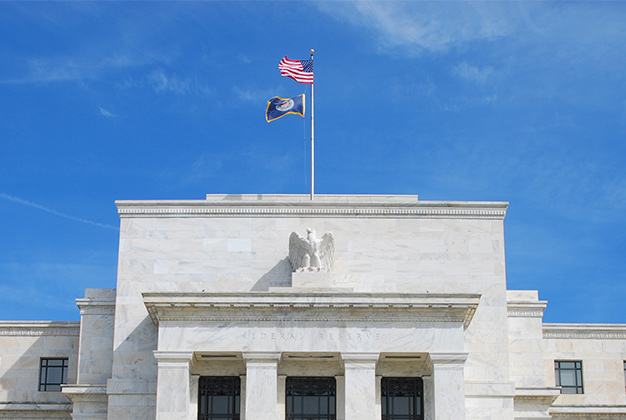
Monetary policy decisions
The most keenly anticipated of the fed announcements is the interest rate decision. This becomes the overnight rate that banks charge each other, meaning the federal funds rate behaves as the benchmark rate for the USD and US economy. It will influence short and long term interest rates, as well as exchange rates and global commodities priced in US dollars.
Because the US dollar is the world’s reserve currency, the federal funds rate has global implications. Start trading CFDs today.
But monetary policy doesn’t just involve an interest rate target. It also involves open market operations to ensure interest rates trade within the fed funds target. An open market operation (OMO) is a tool that permits the Fed to purchase securities in the open market. Most often these securities will be government bonds, but under quantitative easing (QE) programs the Fed has also purchased mortgage-backed securities and corporate bonds.
Purchasing or selling securities under OMO influences the base supply of money in an economy. In doing so, the price of the security increases and its interest rate (or yield) falls. This is also called quantitative easing. But if the Fed sells securities, it has the opposite effect: money supply decreases, security price falls and its yield lifts. This would be quantitative tightening.
The Fed also sets bank reserve requirements - in other words, the amount of capital that must be held in reserves in order to meet obligations. If reserve requirements fall, the bank has more capacity to lend and can charge lower interest rates. If requirements rise, the bank lends less and hikes rates.
How the FOMC meeting moves markets
Forex
Interest rate decisions can alter a currency's value. Those with higher rates will attract long positions from forex traders due to favourable swap rates, which can bid it higher over time. Conversely, a currency with low interest rates tends to depreciate.
Equities and indices
Investors make decisions based on the yield a potential investment offers. If interest rates change, so too does the return investors receive for holding cash in the bank. Lower rates and easy monetary policy can boost the stock market - whereas rate hikes could hurt it.
Safe havens
Easy policy such as zero rates can cause market anxiety and uncertainty. Fearing inflation and currency debasement, traders might flock to safe havens like gold and silver, the JPY and CHF, or alternative safe havens like Bitcoin. If rates rise, safe haven flows could unwind.
The dual mandate
FOMC decision making is guided by the Fed’s dual mandate: price stability and full employment. Monetary policy is set to achieve these long-term objectives.
Price stability: The Fed seeks to achieve price stability by achieving a long-run inflation target of 2%. Inflation running both above and below this level can cause concern. If inflation runs too high, the FOMC might raise rates to encourage saving and reduce spending.
Much of the world has the opposite problem right now though: too little inflation. In theory, lower rates should stimulate consumption and lift inflation, yet the annual increase in personal consumption expenditure (PCE) has barely reached the Fed’s 2% inflation target in recent years despite historically low rates. For some policymakers, this is no longer good enough, and has set the scene for average-based inflation targeting.
PCE (red) and the Federal funds rate (white), 1970 - 2020. Source: Bloomberg
Full employment: In the United States, 4% is estimated to be the long run maximum employment rate. The FOMC adjusts monetary policy to guide the labour market towards the full employment goal. To encourage more hiring, the FOMC eases monetary conditions to encourage spending and boost demand for goods and services.
Financial stability. Over time, FOMC policy decisions have evolved to stabilise financial markets. Forward guidance has been a common tool here, setting clear expectations of future fed rate decisions to suppress market volatility. Then in light of the COVID-19 crisis, the Fed used some creative new tools to keep markets liquid as the US went into an economic lockdown unlimited liquidity in the form of daily repo operations and a Main Street lending program to small and medium business. On a global level, the Fed established a USD swap line to ensure its foreign counterparts could access the USDs they required.
The decision makers
Twelve members make up the FOMC. Seven of them form the Federal Reserve Board, appointed by the US president, and the eighth member is the New York Fed president. The remaining four are district Reserve Bank presidents, who serve on rotating seven-year terms.
Jerome Powell of the Board of Governors is the current FOMC chairman and New York Fed President John Williams is vice chairman.
A key FOMC release is the quarterly dot plot. Each member - the hawks, doves, and those who are neutral - indicates where they see rates moving in the coming years. The dot plot smooths these into an average. Provided conditions and member opinions are consistent over time, it shows the most likely path for the federal funds rate in the medium-term.
Ready to trade better?
Switch to Pepperstone now and join our global community of over 620,000 traders.³Apply in minutes with our simple application process.
1
Register
Sign up with your email address and get a free demo.
2
Answer
We'll check your suitability for our products.
3
Verify
Your safety is our top priority.
4
Fund
That's it! You're ready to trade.
